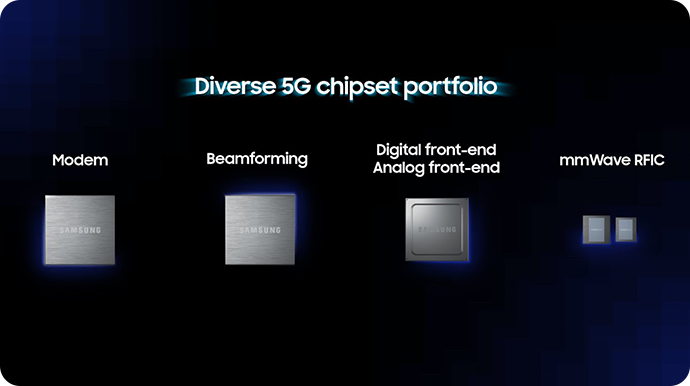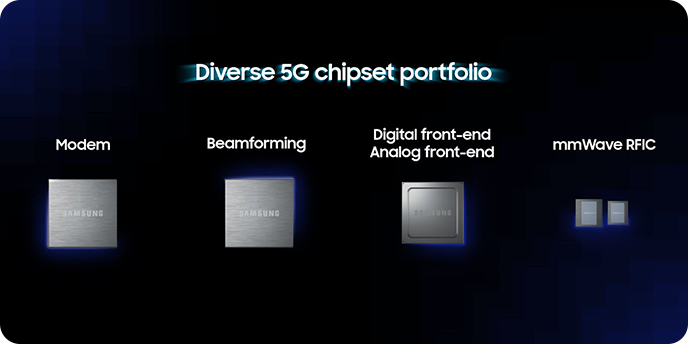Chipsets
At the Heart of
Samsung Radio
Access Network
Solutions
5G has already enabled a wide range of services that present users with a new connectivity experience. However, there are many opportunities yet to be unleashed. The key to unlocking the full potential of 5G lies in technology innovations. This starts with one of the smallest units of a 5G network, the chipsets. Samsung fully understands the critical role of chips in a RAN network, which is why it develops in-house chips that set the company apart from others.
Decades of R&D experience
to drive innovation
Samsung has nearly thirty years of experience in creating in-house chips for RAN networks, spanning 2G, 3G, 4G to 5G. Before 5G, our focus was mainly on modems, which are the engines of our products. However, with the introduction of 5G, we have diversified our portfolio, and are activating more functions into our chips, including beamforming, digital/analog front-ends, and RFICs. Samsung’s 2nd generation 5G chips are already complete and are integrated in our latest 5G products. With our 3rd generation on the horizon, we are excited to launch our latest 5G chips.


2G CDMA


3G WCDMA


4G LTE


5G NR & beyond
Enabling key 5G capabilities

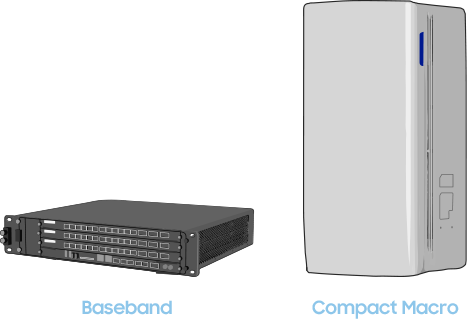
Modem
The modem plays a key role in determining capacity and the features supported by a product, lowering power consumption, and minimizing the size and weight. It is embedded into the baseband and Compact Macro.


Beamforming
Samsung's beamforming chips enable wireless signals to reach their target more accurately. This results in strengthened signals and reduced interference, giving rise to faster and more reliable communications. Additionally, these chips help reduce the size of Massive MIMO Radios by 30%.

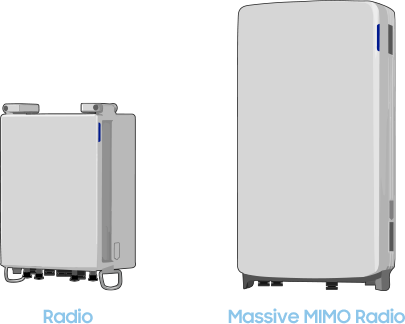
Digital/analog front ends
Samsung's digital/analog Front End (DAFE) chips enable efficient conversion between digital and analog signals for 5G communications. By leveraging this technology, Samsung is able to significantly reduce the size, weight, and power consumption of our radios.
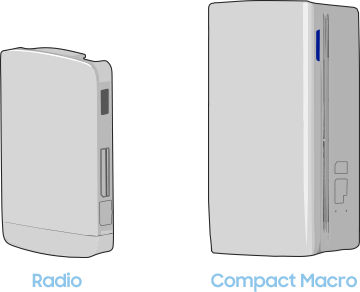
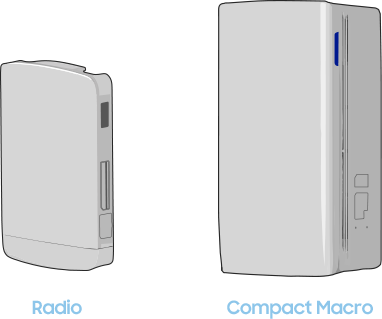
mmWave RFICs
Samsung's RFICs operate across ultra-wide bandwidths, supporting various mmWave frequencies allocated for 5G. These chips, which are integrated into our Compact Macro and mmWave Radios, demonstrate exceptional transmission and reception capabilities while maintaining low power consumption.
Introducing powerful, greener,
and smaller 5G solutions
Samsung’s in-house chips boost the performance of our
products. Our latest product, CDU50, which is equipped
with a 2nd
generation 5G modem, has shown a three-fold increase in
capacity compared to its previous version.
At the same time, we have lowered the power consumption
level for a more sustainable network. For example, the
energy efficiency
of our 1st version baseband stood at 100%, this level
has now jumped to over 300%.
Furthermore, our in-house chips contribute to reducing
the size and weight of our products. For example, the
Massive MIMO Radio,
equipped with our latest beamforming chip and
digital/analog front-ends chips is approximately 30%
smaller and lighter than its
previous version. These compact yet powerful products
assist our customers in simplifying site deployments.
